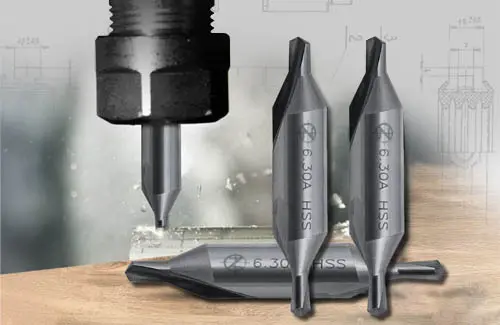The regular price is the current manufacturer's recommended price! FREE shipping for orders over EUR 41,67 within CZ+SK (PPLparcel)

This center drill or a spotting drill is used to drill a centering hole in the workpiece that we will machine on the lathe. These are mainly workpieces of greater length or greater weight, which need to be supported by a rotating tip on the side where they are not clamped in the chuck. These are, for example, alloy steel, cast iron, cermet or polymer plastic.
The center drill is made by grinding, so it is accurate. It has a spiral flute made of high-performance HSS high-speed steel.
The drill can be used both in domestic conditions and on metalworking production equipment.
The center drill is short, has 2 working parts located at opposite ends of the tool itself and a reinforced body that is 3 times stronger than its working cutting parts. When drilling, the drill very rarely breaks and creates holes with high precision. In construction, it can also be used as a countersink for metal or wood.
The centering device not only has the ability to pre-drill a hole for the self-tapping screw, but it can also countersink so that the fitting head is fully embedded in the material. There are also a few cases where a center drill helps to drill screw heads and countersunk screws.
We can choose from the following drill shapes:
DIN 333 form A
- creates a hole with an angle of 60°
- this type of tool does not have cutting edges that form a safety cone when drilling
- the shape of the transition between the drilling and countersinking part is equal to the form A
- they can also be left-handed
DIN 333 form B
- creates a hole with a bent angle of 60° and 120°
- has a bent angle of the deepening stage (the first part has an angle of 60 degrees and then an angle of 120 degrees)
- the shape of the transition between the drilling and countersinking part is labeled form B
DIN 333 form R
- creates a hole with a radius
- the shape of the transition between the drilling and countersinking part is radius (rounded in the shape of an arc), the designation of the shape is form R
- they can also be left-handed
The diameter of the centering device can be in the range of 0.5-10 mm. The selection of the centering drill will depend on the dimensions of the hole we want to make.
More articles:
Zahlubování
Užití stupňovitých vrtáků
Použití závitového očka
Jak vybrat strojní závitník?